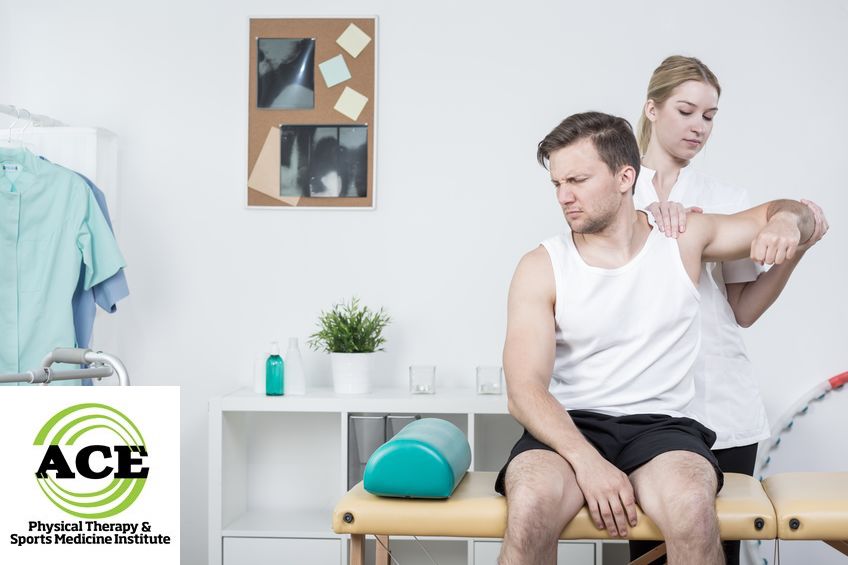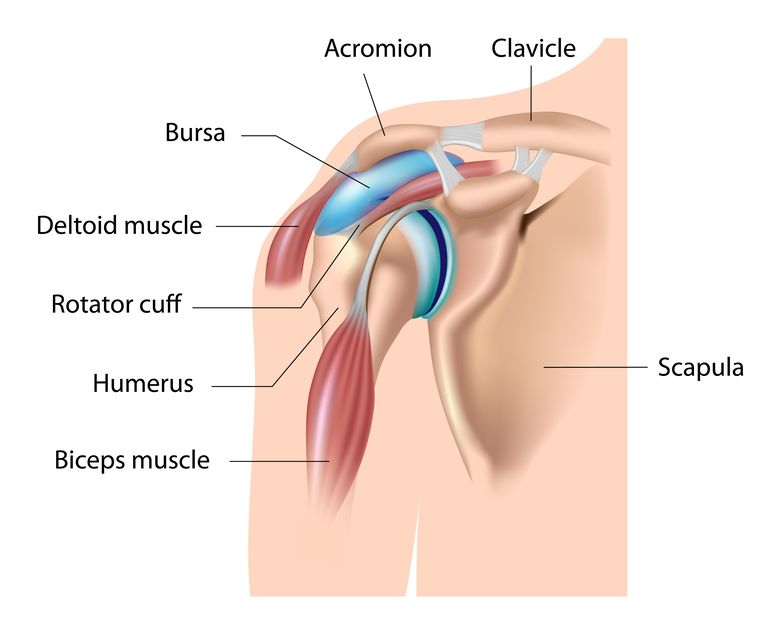SHOULDER IMPINGEMENT SYNDROME AND ITS CONTROVERSIAL TREATMENT

Tid Bits of Info
- Repeated overhead activity is the most common cause of impingement syndrome.
- Impingement syndrome is almost always associated with SA bursitis and Rotator Cuff Tendinitis.
- In the early stages of this condition, the shoulder pain usually occurs when the arm is raised above shoulder level or behind the back.
- Subacromial decompression surgery usually involves removing than just the under surface of the acromion.
- Seek the advice and treatment from a Physical Therapist if you think you might have impingement syndrome.
Every day, healthcare professionals treat shoulder impingement syndrome. This common condition can cause nagging pain as well as intense pain when using the shoulder for simple activities like putting on a shirt, taking a glass down from the cabinet or other everyday actions. It can intensify over time, causing additional problems. Treatment ranges from exercises and pain medication to a surgical procedure known as sub-acromial decompression (SA decompression). Recent research questions the effectiveness of SA decompression
The shoulder joint is comprised of three bones: scapulae, clavicle, and humerus. The head of the humerus rests on the Glenoid fossa of the scapula where it articulates when the muscles of the shoulder contract to move the arm. The head is held “against” the glenoid surface via the four Rotator Cuff (RTC) muscles that act in unison and form a force couple when the arm is moved. The space above the humeral head is the Sub Acromial (SA) space. The Acromion of the scapulae forms a “ceiling” over the joint. Space “houses” the top muscles of the RTC and the Subacromial bursa. The anterior portion of this space has the distal end of the Clavicle as a boundary.

The SA space is small, averaging approximately 9 mm. This space is sufficient for complete movement of the shoulder. If one or more of the structures in this small space is damaged, space will be impinged and shoulder movement will be affected. The sub-acromial space can be compromised in many ways. What causes the space to become smaller/tighter can determine how it should be treated. In some instances, the anatomy of the bone is the only thing causing the space to become occluded. The actual acromion is shaped with a large “hook” on it and this protrudes into the space. In most instances, the space becomes occluded due to bad shoulder posture when someone is attempting to perform above shoulder level activity. There is a natural impingement in the shoulder when the arm is raised above shoulder level. When there is no inflammation there is no pain. If the tendons of the rotator cuff or the SA bursa become inflamed they are larger than normal and this leads to a smaller space. When these structures are inflamed and they are “impinged” there is pain which can lead to the inability to perform certain activities.
Treatments for this condition are numerous. Conservative treatment usually consists of anti-inflammatory medications (oral or injected), ice, rest and Physical Therapy. If this approach is unsuccessful at resolving the symptoms, many physicians will promote the surgical path. The surgery that is most common is the SA decompression which can be done through the arthroscope and literally changes the shape of the acromion’s under surface. The surgeon “shaves or grinds down” the acromion to make more room in the SA space. The bursa is removed at the same time because it usually is very hard and fibrotic and it will re-develop in 4-6 weeks.
A recent study has questioned the effectiveness of SA decompression surgery. The results of the study indicate that there is very little difference in outcomes following a decompression or diagnostic arthroscope surgery. The results of their study indicate that a group of patients unknowingly had either an SA decompression surgery or simply diagnostic arthroscopy and after 2 years there was not a significant difference in the outcomes. Throughout the first year, there was a marked improvement but it did not matter which procedure was used. There are a number of factors that might play into these results, but it does appear that surgery might not be the best way to approach the treatment of impingement syndrome.
In most instances, the person suffering from impingement syndrome has poor shoulder posture. Their rounded shoulder posture can lead to a reduced SA space and soon to follow are the symptoms of impingement syndromes. Seeking the advice and treatment from a Physical Therapist can hasten the healing process if you have been diagnosed with impingement syndrome. If you are concerned about the possibility of developing impingement syndrome, ask your healthcare professional for some advice as to the proper exercises to perform to lessen the chance of developing the symptoms.
Impingement syndrome does not require surgery in most instances. There are a number of exercises that can be performed to help to prevent the onset of this condition. Simply correcting your posture and eliminating the “rounded” shoulder posture will begin the process and performing the correct exercises will enable you to maintain a strong and well-balanced shoulder.
























